Leaving Coruna for the Coast of Death 43 15N 8 58W

Gryphon II
Chris and Lorraine Marchant
Tue 4 Aug 2009 17:12
|
Leaving Coruna for the Coast of
Death
Coruna - 27th July,
2009
10.00 a.m. and all was stowed, hatches and ports closed
and locked for passage, the violent and willful chopping board secured and
breakfast milk cartons packed into fridge. Mooring warps were released and
goodbyes made to our neighbours, from the exquisite wooden boat, whom we first
met in Cedeira. They are having problems -wife having balance problems and not
sure if it is middle ear trouble or 'old age setting in'. Either way, they can't
sail and have eventually managed to get someone to come over from U.K. to help
husband Tim to sail the boat back whilst she flies home. It has taken them days
to sort this out and we wished them well.
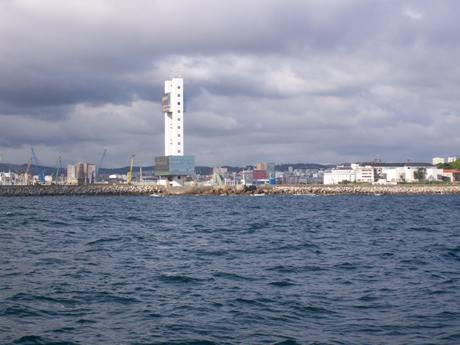
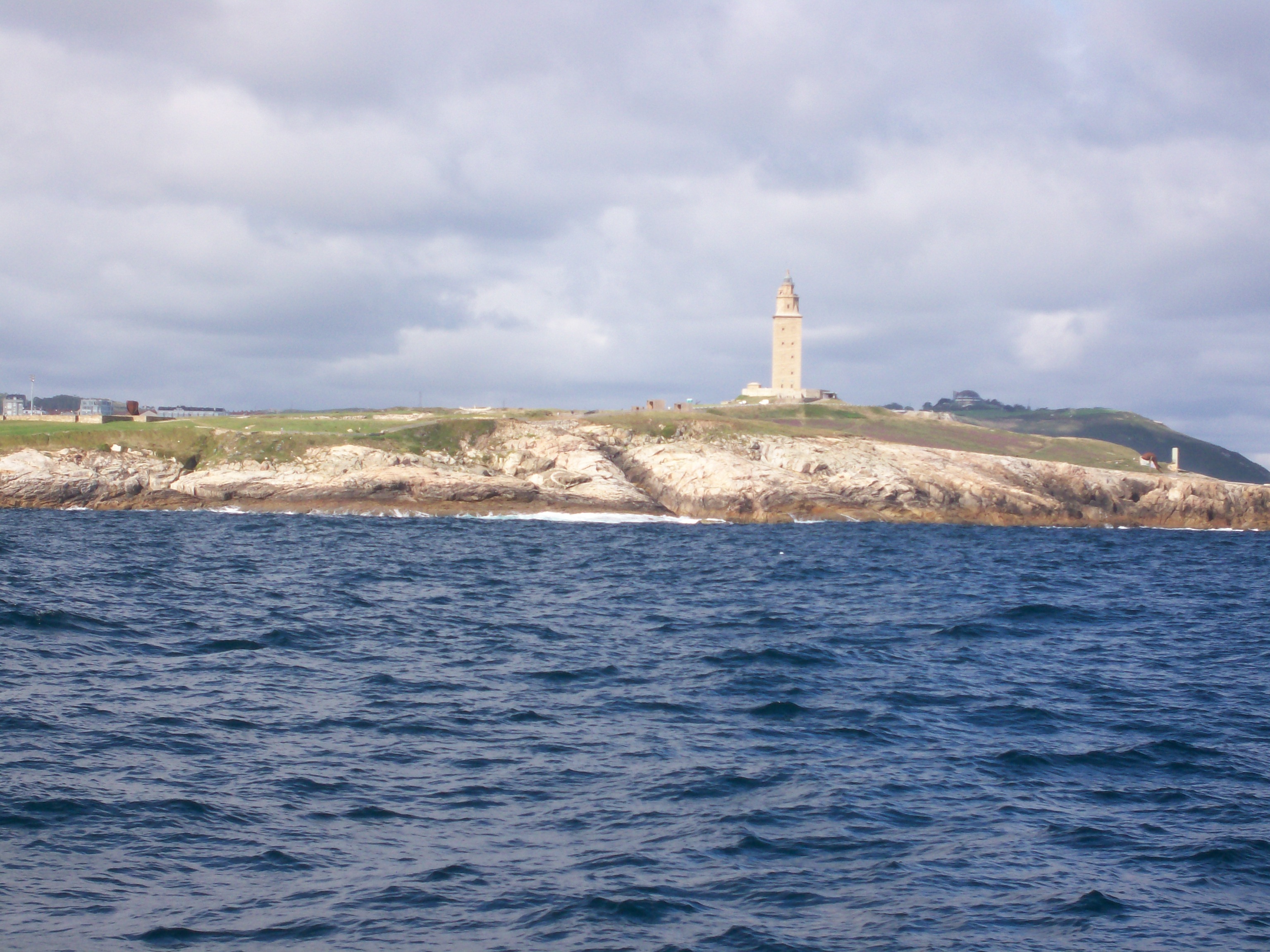
The two towers of Coruna - the Harbour Offices and the Tower of
Hercules
We hauled the mainsail but motored out of the Ria under
heavy shifting cloud. As we hoisted the main, gallons of water poured out and
washed the decks for us, it had rained heavily all night but is dry now with a
hint of sunshine behind the cloud drifts. It is woolly hats, fleeces and
windproofs at the moment so no Spanish hot, hot, hot at this hour in these
Northern waters; the hottest time of the day here is usually 17.00 p.m. We came
out into a big swell of about 2 metres, occasionally more, which exercises the
knees and back as the boat climbs and dips and occasionally falls off the top of
the swell with a little slam. The interval between lifts is quite short so the
movement is uncomfortable and not like the bigger, longer and slower swells we
have experienced out in the Atlantic.
Costa da Morte - The Coast of
Death
We are five miles out from land travelling south along the
Costa da Morte, so called because of a number of unmarked off-lying dangers up
to four miles off shore and numerous wrecks of vessels that have foundered here.
We have the mainsail and the jib hoisted but are also under engine. We are
making 6 knots but can only get 2.5 under sail and against this swell that is
just not helpful. We were hoping to stop for lunch at Islas de Sisargas, a
tightly clustered group of 3 small and very rocky islands just off the Cabo de
San Adrian, the headland that we need to round. However, all our pilot
books warn that they are dangerous in all but the most settled weather.
The Sisargas channel is hazardous, both east and west winds can produce
breakers and there are strong tidal streams, so with a westerly wind and
this heavy swell we shall just pass them by and wave as we go. Safety first on
the Coast of Death!
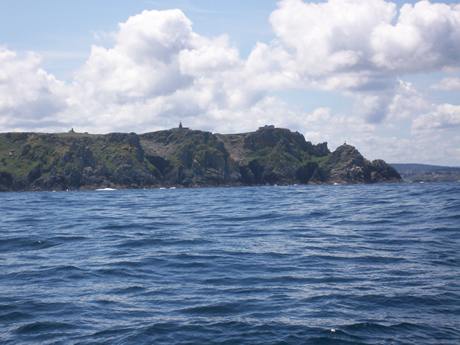 Islas
de Sisargas - the three islands are a sea bird
reserve.
We are heading for the Ria de Corme Y Laxe, still in the
Altas or higher Rias region so the coastline is still quite high with occasional
plunging cliffs leading to white horseshoe beaches, and with villages built in
the clefts of steep valleys and spreading up and out across the hill in
colourful fashion. A manx shearwater is skimming the waves on our port side. We
have seen so few of them on any of our passages that we looked on internet sites
for information. Apparently over the last few years the population in these sea
areas has fallen but there is uncertainty about why this is happening, some
research is being or is going to be done. Here they are called the English bird
because their breeding colonies are in U.K. including the Calf of Man, otherwise
the are always on the wing over the water or on the water out at sea.
We have now rounded the headland, passing Cabo de San
Adrian with its Punta de Roncudo and lighthouse. The Ria de Corme Y
Laxe is very wide mouthed and open to the swell which seems to be rushing in
with us.


Waves crashing over outlying rocks at the entrance of Ria de Corme Y
Laxe.
However, there is a harbour wall at Corme which shelters
viveros where they grow yet more mussels so we are creeping in behind the wall,
avoiding the viveros to starboard and the rocks to port. The water has
slackened, the swell flattened and our anchor is now happily embedded in deep
sand about 250 yards off the beach.
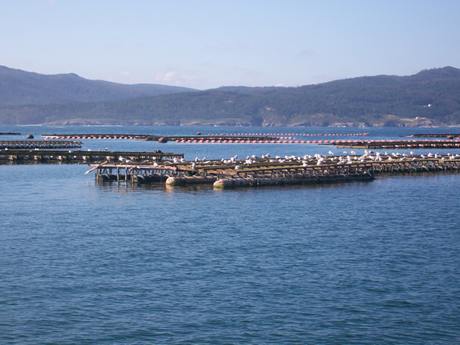 The
mussel rafts - viveros at Corme
Holding in these Rias has generally been very good indeed
with plenty of clear sand for anchoring, we had a problem with heavy kelp in one
place but soon found clear patches. The good thing is that it is reasonably easy
to see where to anchor as the colour of the water changes beneath the boat. A
steady rolling motion has set in and we are swinging round on the anchor so just
don't know what kind of night it will be.
28/07/09
Ria Corme Y Laxe proved a very successful stopover. We
spent a peaceful night with occasional light swell, tucked behind the mussel
rafts and enjoyed breakfast afront the beach. We needed a post office and Corme
town is less interesting than its harbour so we pulled up the hook and motored
across the Ria to Laxe with its smaller harbour but enormous crescent shaped
beach.
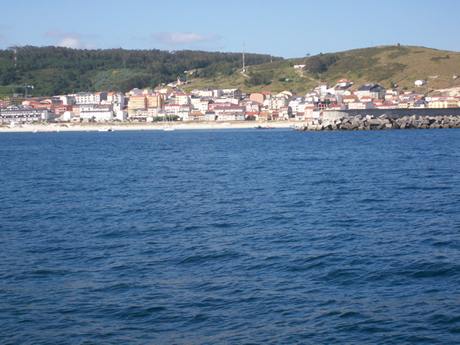
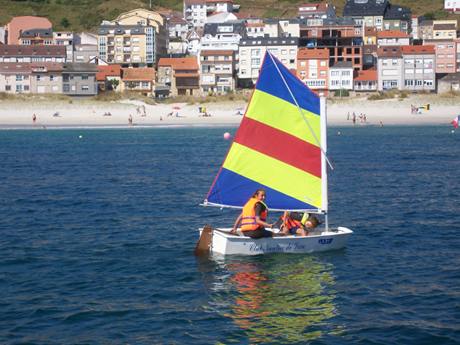 We happily anchored
behind the harbour wall at
Laxe. Forgetting
how to go to windward these two liddlies got stuck
beside our boat, CVM to the rescue with sailing sign language.
This side was more swelly but safe enough to leave the
boat at anchor. We rowed the dinghy to the shore and walked up to the post
office (Correos) where we posted letters and cards to U.K. We decided to walk to
the top of the hill behind the town where we had spied a white capella (chapel)
and higher still the remains of a disused windmill. This took us on a winding
route through the rather colourful, steep streets of the town and onto the
hillside tracks when the houses ended. We looked down onto lower hills which
were dotted with allotments that stood out greener and lusher than the
surrounding scrubby grass and clumps of wild flowers like these.
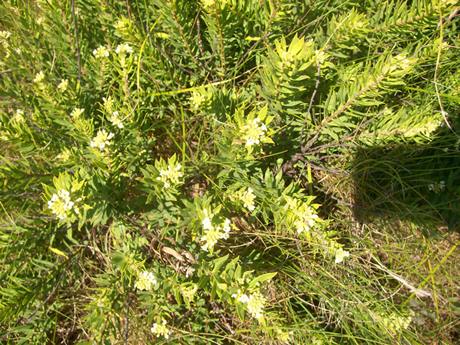

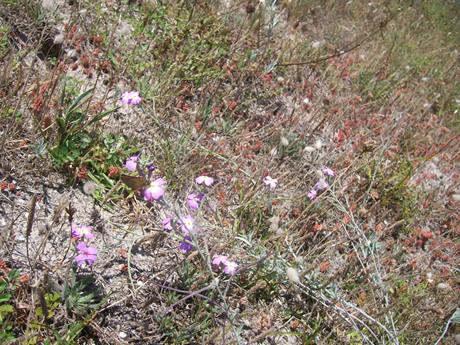 The chapel was still adorned with flowers after homages on
16th July to the Galego saint of fishermen, Virgin del Carmen; it still looked
good but must have looked wonderful on the day.
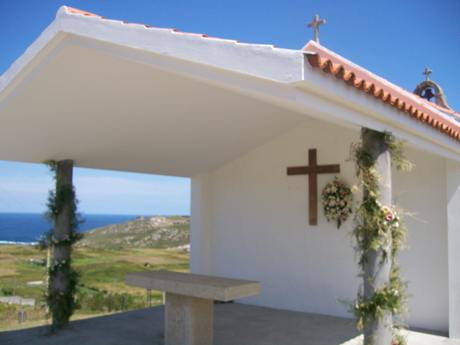
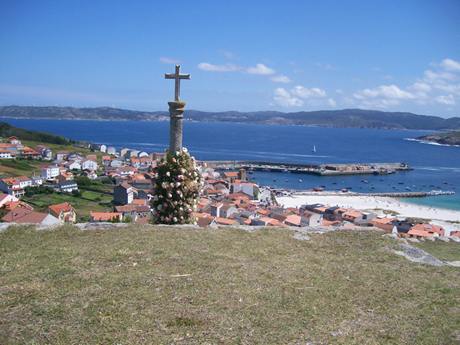 Back
to the town with its promenade decked out in sculptures.

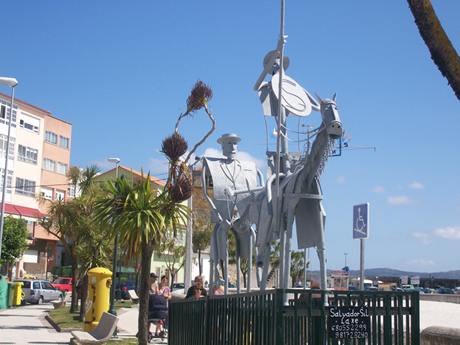
A seahorse who has swapped his
tail for
Sancho Panza tilting at windmills
a concrete anchor.
A van stopped beside us and two fisherwomen got out to
blow a horn very loudly to announce their fish for sale, they had excellent
fresh fish brought up from the harbour, we bought two which we think were sea
bream but we really had no idea, the local name was difficult to grasp. The
Galegan language seems as different from Spanish as Portuguese so our Spanish
dictionary and phrase book often fail us in Galicia. The fish purchase prompted
us to buy some local veg, lots of tomatoes, french beans and fruit, oh yes and a
little wine too. The cheese in Brittany was good, quite a wide range including
goats' cheese but in the main these were soft cheeses. In Galicia some of the
best artisan cheeses are the really hard cheeses which are excellent, there are
the softer cheeses shaped rather like a bell which are mild and creamy but quite
expensive, then the softer sheep's and goats' cheese which is very good. The
olives are excellent and cheap as chips, the wine....well we need to drink quite
a bit more of that, there is so much to choose from but we really like the white
wine here and the bottled beer is really good.
Provisioning complete including a massive melon (they are
all massive here) which has been difficult to stow, we upped anchor after CVM's
short swim to free the log paddle wheel from shells and now continue our way
down Costa da Morte en route for Ria de Camarinas which we are really
looking forward to.
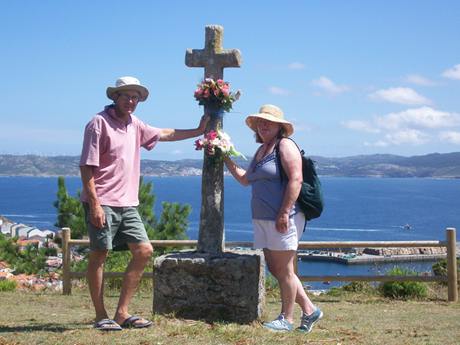 |